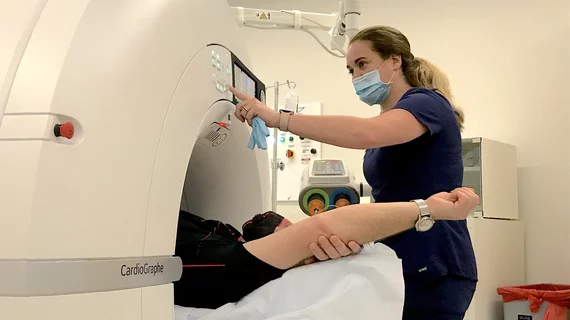As of last fall, 35% of radiologic technologist educators seeking to place prepared students in open jobs were still hampered by the effects of COVID-19 on healthcare operations.
The good news: That figure was much lower than the 98% who reported placement trouble in the spring of 2020.
What’s more, autumn of 2022 found 97% of these trainers saying less than 25% of their clinical rotation schedule had been eliminated due to the pandemic.
By comparison, in April 2020, 62% had entirely done away with their clinical rotation schedule.
The generally upbeat picture emerges from survey data collected by the American Society of Radiologic Technologists (ASRT), which sent questionnaires to training-program directors between September and November of last year.
The targeted recipients covered the entire field, numbering close to 1,200 directors of programs approved by the American Registry of Radiologic Technologists (ARRT) in radiography, radiation therapy, nuclear medicine, sonography and MRI.
Some 247 directors completed the 2022 survey, which ASRT has conducted every year since 2001.
ASRT reports the number of enrolled radiography students increased around 5% year over year, from 15,477 in 2021 to 16,235 in 2022.
Enrollment was down in radiation therapy programs, which had per-program increases yet fell from 1,275 students in 2021 to 1,208 in 2022.
ASRT attributes this to a drop in the overall number of radiation therapy programs.
Other findings from the group’s 2022 survey:
- A plurality of respondents (41.1%) work at a community college; 27.2% work at a university, 21.5% at a medical center, 7.7% at a technical college, and 2.4% at a for-profit school.
- The most common terminal degree offered by responding institutions is an associate degree (61.4%); 23.6% offer a bachelor’s degree, and 15.0% offer another type of degree.
- Most of the programs surveyed plan to maintain their current levels of enrollment; 62.9% of programs across these disciplines plan to keep their enrollment at the same level; 36.3% of programs plan to increase enrollment, and the remaining 0.8% plan to decrease their enrollment.
- The majority of programs across disciplines (83.3%) will definitely continue to operate; 15.0% will most likely continue operations, 0.8% will most likely close, and another 0.8% will definitely close.
ASRT has posted the full survey report.

